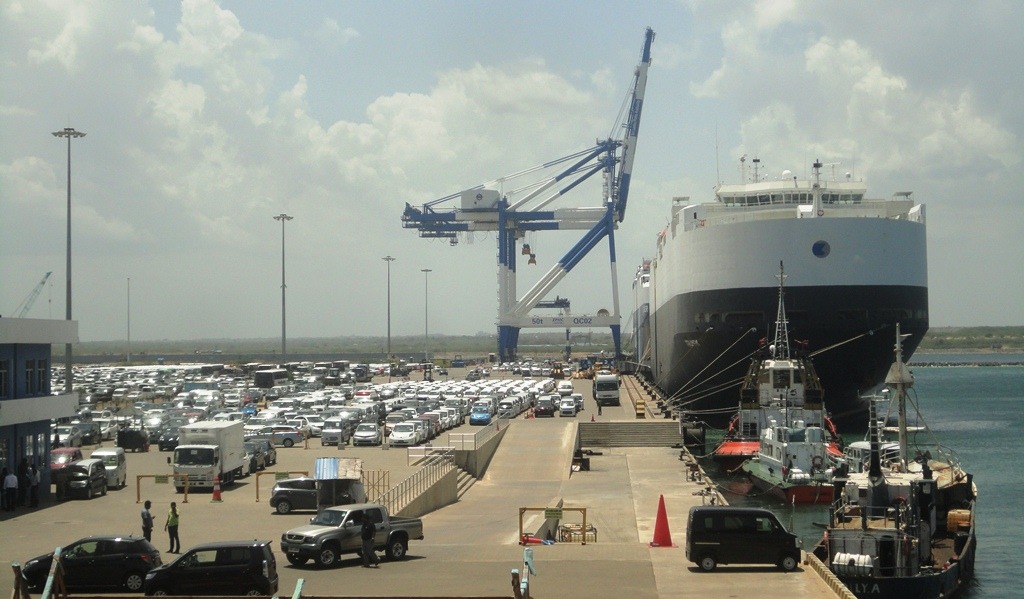The Belt & Road Isn’t Worth Competing With

By Harry Clynch
Staff Writer
7/7/2022

Snowy mountains near Khorgos Gateway freight station, in eastern Kazakhstan (Picture Credit: Alexandru Panoiu)
On the western extreme of the Taklamakan Desert lies the Khorgos Gateway. Located in the wilderness at the Kazakh-Chinese border, this dry port was once heralded as a flagship project of the Belt & Road Initiative (BRI). Beijing envisaged the Gateway becoming a central part of a New Silk Road, expanding land-based trade across Eurasia and allowing Chinese freight to be transited thousands of miles to consumers across two continents.
Since the site began operating in 2015, however, this isolated desert settlement has hardly become the epicentre of global trade. In fact, most of the (relatively small) amount of cargo containers heading towards China from Europe are empty. The Chinese Communist Party (CCP) has tried to encourage companies to use this route through subsidies, so many exporters have opted to transport empty containers just to receive government funds. The majority of exporters continue to prefer alternatives. Sea routes are cheaper. Air routes are faster. BRI land routes have generally been criticized for fostering waste and corruption. Globally, too, sea or air are almost always the preferred option.
This image – of empty cargo trains passing through an obscure segment of the Taklamakan Desert – is a powerful symbol of an initiative characterized by bad investment, waste, and publicity stunts. It’s becoming clearer by the day that the BRI is a failure. So why do politicians in the free world continue to be so frightened by it?
Map of Belt & Road transport routes (Picture Credit: Lommes)
At the recent G7 summit at Schloss Elmau in Germany, leaders pledged to raise $600 billion in private and public funds over the next five years. The idea is to finance infrastructure in developing economies, providing an alternative to the BRI. US President Joe Biden said the G7 wished to demonstrate “the concrete benefits of partnering with democracies.” British Foreign Secretary Liz Truss stated that the new Partnership for Global Infrastructure and Investment (PGII) would act as “an economic NATO” and offer “an alternative to investment from autocratic regimes.” The free world is clearly seeking to compete with the BRI. But what’s the point, when the BRI is going so badly?
The free world is clearly seeking to compete with the BRI. But what’s the point, when the BRI is going so badly?
Ever since Chinese President Xi Jinping announced his flagship foreign policy in September 2013, Western governments have feared the worst. Politicians and policymakers have long suspected that the BRI is part of a grand strategy to displace the US as the world’s foremost power. By pouring money into developing economies around the world – and luring poor countries into taking on debts they can’t repay – many suspect that China is trying to buy geopolitical advantage. The example of Sri Lanka’s Hambantota Port, a strategic gateway to the Indian Ocean that was handed over to China in lieu of debt repayment, is often cited.

Hambantota port, Sri Lanka (Picture Credit: Dinesh De Alwis)
But this is only part of the picture. Whatever Beijing’s motives are – and they are unlikely to be particularly benevolent – the majority of BRI projects are unlikely to cover the costs. China has invested in a range of initiatives that seem eye-catching, but aren’t particularly economically valuable. A gas pipeline that runs from the Myanmarese port of Kyaukpyu, for example, has operated at little over a third of its capacity for almost a decade and isn’t profitable for either China or Myanmar. Nor is it strategically valuable in the event of a default. The World Bank came to a similar assessment about another China-backed port in Malacca in Malaysia. Are such projects really something that G7 leaders should be losing sleep about?
A gas pipeline that runs from the Myanmarese port of Kyaukpyu isn’t profitable for either China or Myanmar. Nor is it strategically valuable in the event of a default.
Investments of this kind partly stem from the fact that the BRI is more of a propagandistic marketing stunt, designed to promote Xi’s idea of a globally strong and rejuvenated China, than a serious attempt to further geopolitical goals. As a result, there are plenty of projects which seem to be big, bold, and daring – but have minimal value. The East Coast Rail Link (ECRL) in Malaysia is another good example of this. On the surface, the ECRL seems to be a striking initiative to encourage trade and investment in the region, by connecting Port Klang in the south-east to the country’s biggest commercial port, Kota Bharu in the north-west. The railway would also connect the Strait of Malacca with the South China Sea. The shortest sea route between oil-suppliers in the Gulf and China is through the Strait, and Beijing has long feared a blockade that could disrupt energy sources in the event of war (or increased tensions) with the free world. The ECRL, Beijing hoped, would nullify that risk.

Xi Jinping and other world leaders at a Belt & Road forum in Beijing in 2019 (Picture Credit: President.az)
However, the reality is more complicated. The ECRL might be useful in the event of a blockade, but corruption and poor decisions meant the project’s price-tag rose to an astonishing $22 billion. This far outweighs any economic advantage China or Malaysia is likely to gain from the railway. In addition, trade in the region largely depends on shipping, and it seems unlikely that shipping companies would pay more to use the railway when they would save barely 30 hours by doing so. Many politicians in Malaysia now openly state that the railway will never be profitable and will eventually have to be bailed out by the government.
In any case, the ECRL also became a political football in Malaysia, with Mahathir Mohamad’s successful 2018 political campaign criticizing the incumbent, the kleptocratic Najib Razak, for his close links with China, and the debt this had pushed Malaysia into. After taking office, Mahathir managed to renegotiate the deal to allay “debt-trap” concerns, cutting the cost for Malaysia by a third. As Malaysia seems determined not to default on this debt, the chance of China gaining control of the ECRL seems remote. Further, the railway is unlikely to encourage trade in Southeast Asia as Beijing hoped. China has secured little, if any, commercial or strategic benefits from the whole affair.
Elsewhere, from Myanmar to Sri Lanka to Pakistan, BRI initiatives have met with similar levels of political resistance stemming from public unease at the large amount of spending and Chinese immigration that often accompanies them. If the BRI aims to remold global politics – and that’s debatable – then it isn’t going particularly well.
From China’s perspective, there’s also the risk that the country is exposing itself to a potential debt crisis in emerging markets. Increasingly, recipients of BRI funds are finding that they cannot pay back the loans and are requesting debt relief or renegotiations. Many debtor countries, like Belarus, Cambodia, Serbia, and Kenya, are already heavily indebted and have very poor credit ratings. They turned to China because they would struggle to get cash on conventional capital markets. But all this means is that China has taken on a huge amount of risk, and could lose a lot of money for little benefit. Put simply, China is choosing unreliable financial partners. Why would the free world want these partners? What did Napoleon say about not interrupting your enemy when he’s making a mistake?
China has taken on a huge amount of risk, and could lose a lot of money for little benefit. Put simply, China is choosing unreliable financial partners.
This is exemplified by China’s experience with Venezuela, which it lent around $60 billion between 2007 and 2017. The country defaulted on its foreign debt in 2017 after a sharp downturn in oil prices and decades of economic mismanagement, with China forced to defer loan payments and restructure the deals. Beijing seems chastened by such experiences and has drastically scaled back its foreign lending. While nobody in China can say it, because the BRI is linked so closely to Xi’s personal cult, there’s a growing unease about the whole project. It really isn’t the grave threat the free world seems to think it is.
Back in 2017, Chinese state media released a rather bizarre music video extolling the potential of the BRI and its global reach. The mood in Beijing has shifted markedly since then, with state-controlled tv channels and media publications now referring to the initiative less and less. China, having been stung by a series of poor investments and unreliable partners, has realized that the BRI hasn’t delivered in the way President Xi intended. It’s time the free world realizes it too.
